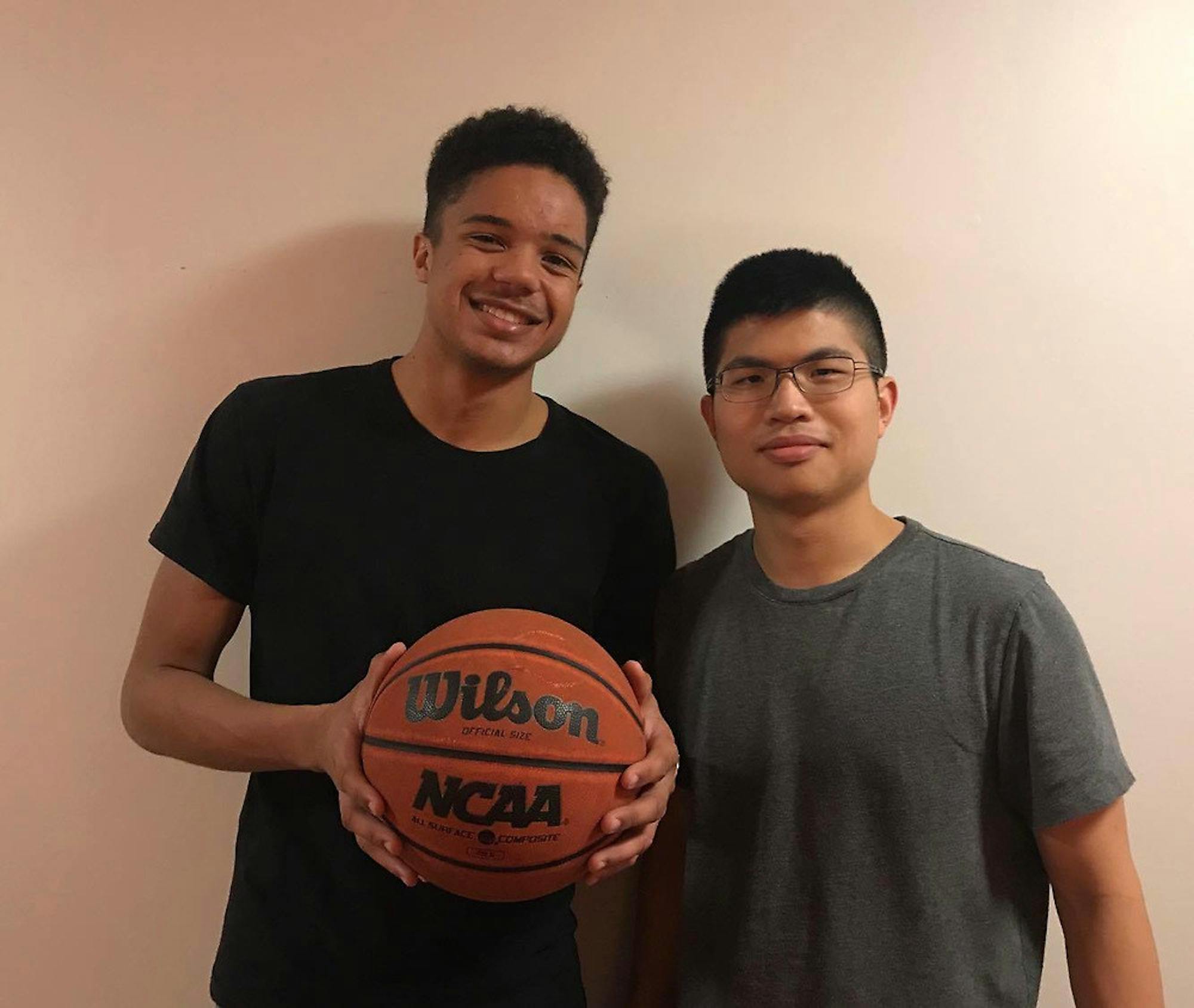Tufts club basketball has got game, and the team finally has games on its schedule. Founded just two years ago as a small group of students sitting around a table discussing NBA and NCAA current events, the team has grown into a powerhouse of capable players, finally recognized by the university as of this semester.
Originally, alum Jordan Kemp (LA ‘18) conceived the idea, seeking an outlet for students looking to go beyond Tufts’ intramural offerings.
Junior Miko Hadeshian, a member of the club basketball team since his first year at Tufts, spoke about those early days of the club.
“At the very beginning, it was just some people meeting up in the gym to play. Then we started talking, and a few of us decided ‘Oh, let’s try and actually play against other schools,’” Hadeshian said. “We scheduled a few informal scrimmages against other local universities like Northeastern and Harvard, and we had a lot of fun, so we tried to make it legit. We went through a bunch of hoops trying to do that.”
Club basketball quickly gained momentum in 2017, and again this year under the captaincy of senior Steve Isett following the departure of Kemp. However, the team struggled to gain a foothold with the university early on regarding officially joining the Tufts club sports portfolio.
“Jordan really got the idea off the ground, and I’ve been able to use a lot of his framework from last year to run tryouts and practices,” Isett said. “He left me with a few contacts for other club teams in the Boston area but to grow the program I have had to take the initiative myself and keep finding opportunities for games and tournaments.”
Boston's cold winters, combined with Tufts' two full-size indoor basketball courts, create a high demand for gym space. First priority goes to the men’s and women’s varsity basketball teams and, given the high standards for NCAA play, practicing six days a week for each of these teams is a necessity.
However, the challenges associated with court time don’t end with varsity basketball. Varsity volleyball also needs the gym space, as well as special events such as Tufts-hosted yoga and pilates classes for gym members, gymnastics meets for local youth programs and many more.
Ultimately, there is little time to squeeze all of this activity in. With classes during the day, club basketball was once forced to start practices as late as 9 p.m. just to find space to play.
“It was tough to find time for practice before we got recognized, but since we’ve had a consistent slot on Sunday and Monday nights from seven to nine to bring everyone together,” Isett said. “It’s a substantial improvement, even though it is two nights back to back.”
Although the team has finally been provided with guaranteed practice times, Hadeshian mentioned that some of these logistical difficulties have had an impact on what the club hoped to accomplish this year. Because of their somewhat inflexible practice times, some members of the team were forced to pull out of the program due to scheduling conflicts. Similarly, because the team did not receive official club status until late in the club basketball season, they were unable to join a league for this year and will have to wait until next year to apply.
Despite some difficulties along the road, Hadeshian also said that he believes that the official relationship between the club and the school is off to a great start.
“We got funding, which pays for referees and jerseys, so that definitely helps us out a lot,” Hadeshian said. “As far as actually going out and playing in these games, we only used to do a couple a year, and now we can definitely do a lot more.”
Previously, funding had remained a principal concern within the club. While Tufts can’t be expected to provide full funding for every club sport, prior to being recognized, club basketball received no funding at all. With entry into the National Club Basketball Association (NCBBA) costing up to $750 per year not including transportation, team bonding and other independent tournaments, the price to play was steep for Tufts students.
According to Isett, the team received $1,000 in funding from club sports, finally making it possible to join an official league, such as the NCBBA or the National Intramural and Recreational Sports Association (NIRSA). Currently, other Tufts club sports such as soccer participate in NIRSA.
Isett expects that the team will join a league next year and will no longer have to play what currently amounts to scrimmages in whatever gym spaces around Cambridge and Somerville they and their opponents can secure.
Thus far, the team has played in games against Northeastern and Boston University, two more established programs at larger schools. However, despite these programs having established histories on their campuses, Tufts has proven that while intramural basketball is a new club, they should not be underestimated. In their first official game as a club sport, Tufts beat BU as a result of some impressive shooting performances from the Jumbos.
Sophomore Owen Copps spoke about this win, highlighting it as one of his favorite memories on the team.
“When we played BU, we started the game with five straight threes, so we went up like 15 points off the bat, and kind of just coasted to a win from there, so it was just a good win,” Copps said. “Just coming out — I mean BU is probably like, what, five times the size of us in terms of people? So we just went over there and got a win for the Jumbos, so that was fun.”
As the team continues to comfortably adjust to their status as an official club sport, Tufts will host its first-ever home games over the next few weeks, with Bowdoin coming to Medford on Feb. 17 and BU coming on Feb. 25. Isett remains unsure whether these games will be played in Cousens Gym or on the intramural court, but either way, he is grateful that Tufts has agreed to provide space for the games.
Moving forward, the team hopes to enter into the NIRSA regional tournament in Amherst, Mass. in mid-March, the first time it will participate outside of a local scrimmage environment.
Club basketball jumps through hoops to gain official status

Founder and former captain Jordan Kemp (left), (LA '18), and former member Mathew Lee (right), (LA '18), of Tufts Club Basketball team are pictured.





